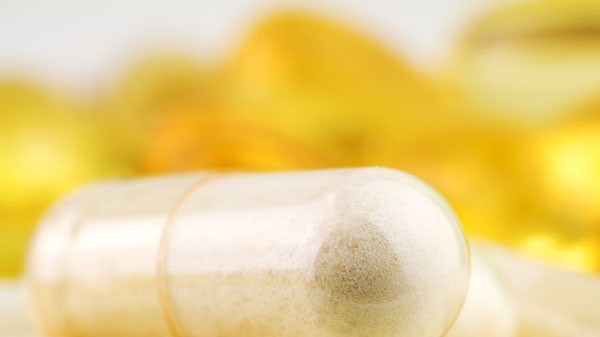Expert opinions:
Since glucosamine and chondroitin are extremely controversial dietary supplements, we will allow a few experts to give their opinion first before discussing the positive effects of these two vital substances on our joints in more detail and examining the available studies, in order to reassure you at this juncture that the further study of these two highly effective, natural joint nutrients is worthy of your time:
‘The medical evidence suggests the use of glucosamine sulphate to alleviate arthrosis symptoms and possibly inhibit disease progression’, researchers at Creighton University in Omaha, Nebraska, found in 20 randomised controlled trials involving more than 2,500 patients.)[1]
‘Glucosamine sulphate is a physiological substance that has been shown to slow down arthritis progression. The benefit-risk profile is favourable’ (Prof. Dr. med. R. Jakob, Chief Physician Orthopaedic Clinic, Freiburg)
‘It appears that these components (glucosamine and chondroitin sulphate) play a role in the efficient treatment of joint disease’. (Journal of the American Medical Association as an assessment of 15 clinical studies on glucosamine and chondroitin sulphate in March 2000)
‘Glucosamine is an important building block of the cartilage and inner skin of the joint. It ensures sufficient joint lubrication and thus smooth joint function’. (Brigitte van Hattem, medical journalist)
‘Glucosamine sulphate is an intermediary in the biosynthesis of cartilage tissue. It stimulates the formation of proteoglycans. Glucosamine sulphate thus promotes the regeneration of cartilage and bone tissue’. (Norbert Fuchs, ‘Mit Nährstoffen heilen’ (‘Healing with nutrients’))
‘Glucosamine is a mucopolysaccharide, an amino sugar, a vital building block not only for cartilage, ligaments, tendons and bones, but also for connective tissue, arterial walls and skin. Chondroitin is also a molecular sugar compound and is one of the basic components of cartilage’. (René Gräber, naturopath, www.gesund-heilfasten.de)
‘As a substance produced by the body itself, glucosamine stimulates the cartilage cells to form collagen, inhibits the release of cartilage-destroying enzymes and breaks down inflammatory mediators’. (Sven-David Müller Northmann, ‘Handbuch der Vitalstoffe’ (‘Handbook of Vital Nutrients’)
After having gained an insight into the physiological correlations in the preceding chapters, we now turn our attention to the substances in more detail:
While chondroitin has been in the headlines for some time now thanks to certain prominent professional athletes, according to their statements, these athletes’ sport-damaged joints have chondroitin to thank for their functionality during their athletic careers, glucosamine is the younger sibling in this regard, which produces regular, all the more controversial headlines which mainly revolve around the question of whether glucosamine works or not...
The deterioration or destruction of the hyaline cartilage, which acts as a natural buffer between the bones, preventing them from rubbing against each other, is the main problem in joint problems and the associated pain. The cartilage consists of 70-80 % of water, in which glucosaminglycane (GAG), chondroitin, hyaluronic acid and collagen can be found.
Glucosamine as the body's own substance
Glucosaminoglycans (GAGs) are derivatives of glucose, which have additionally bound nitrogen – which is why they are referred to as ‘glucosamine’ rather than ‘glucose’ As a result, their properties change from the sticky-sweet sugar solution of a glucose to a mucilaginous mass, which makes the synovial fluid a lubricant and shock absorber at the same time.
The most important component of hyaline cartilage and synovial fluid is GAG hyaluronic acid, which in turn accounts for 50 % of glucosamine.
Chondroitin as the body's own substance
Chondroitin consists of the two sugar-like building blocks galactosamine and glocoronic acid, which, like hyaluronic acid, are made up into long chains in which the two simple sugars always alternate. In contrast to hyaluronic acid, these still contain a sulphur-containing subgroup, which is why they are also called ‘chondroitin sulphate’ as well as chondroitin.
As a component of cartilage, chondroitin, among other things, has the task of providing resistance to pressure – if there is a deficiency of chondroitin, this is directly accompanied by arthrosis (joint wear).
Since the chondroitin molecule is about 250 times larger than the glucosamine molecule, glucosamine is better absorbed in the digestive tract and fed faster to the rest of the body.
Conclusion:
Both substances are natural components of the articular cartilage, both working synergistically with each other and doing completely different tasks which aid the preservation and rebuilding of the cartilage. After this brief anatomical excursion, it should be clear to even semi-intelligent people, even without any evidence, that dietary supplementation with substances that are the main components of the organ to be treated (in this case, our joints) is an optimal means of promoting its regeneration.
Just as a power athlete feeds protein to muscles for muscle building and regeneration from the outside, paying as much attention as possible to protein, which has an amino acid profile that is as similar as possible to the musculature, it is exactly the same with glucosamine and chondroitin in the case of joints.
Is it not the case that calcium is recommended to strengthen bones, which are known to mostly consist of calcium?
Is it not true that we rely on collagen creams to provide the skin, which is mostly made up of collagens, with their material and to relieve wrinkles?
The logical premise is ALWAYS:
Give the body the building material it is made of so that it can rebuild and repair what it is made of.
And why should it be any different for our joints?
Thankfully, dietary supplements have been around for quite some time, including the two most important building materials for our joints: glucosamine and chondroitin.



